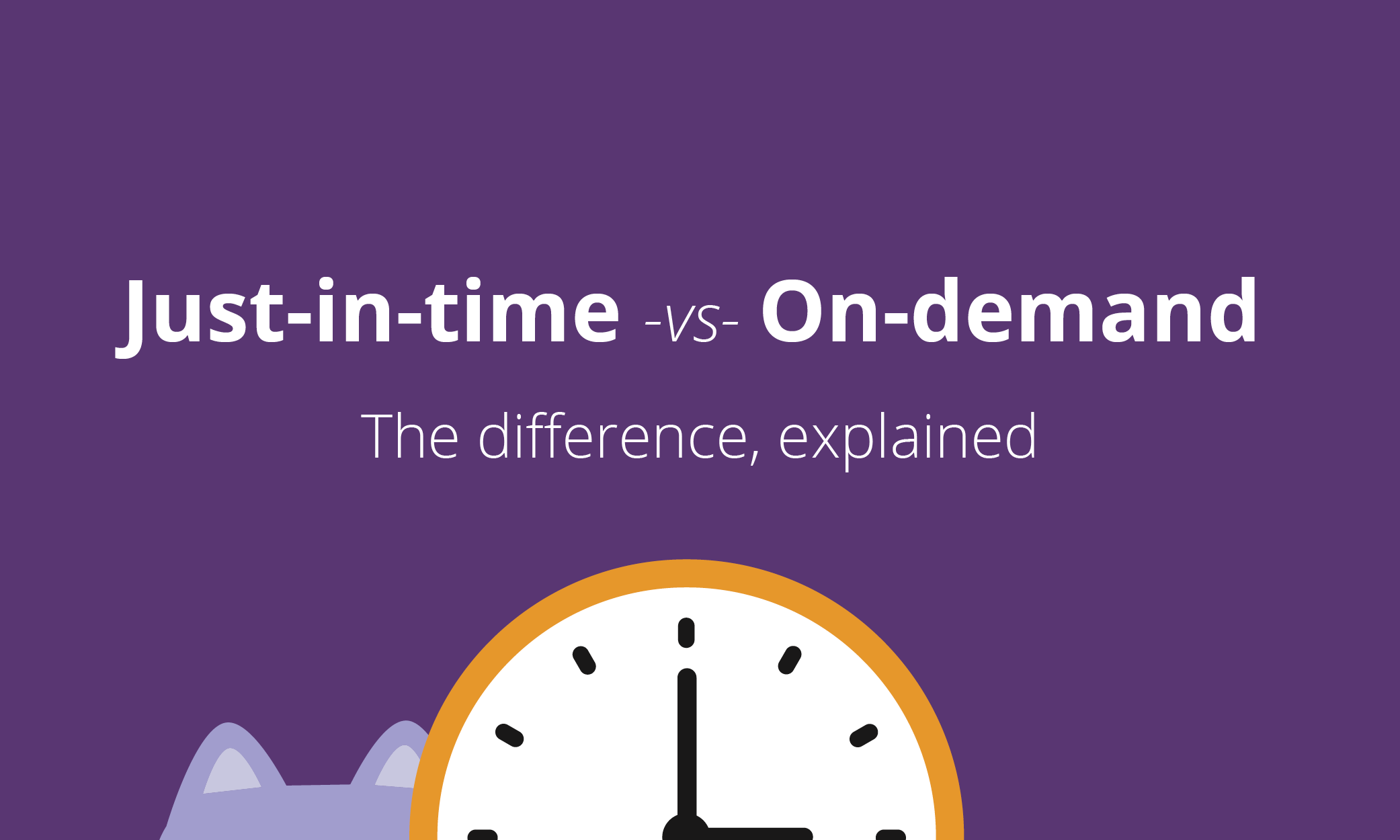
Just-in-time vs. on-demand training: the difference, explained.
Quick: what does “just-in-time training” actually mean? And how is it different than “on-demand” training?
And does it even matter?
Yes, it does. Both are good, but they’re not the same thing, and the difference matters—especially when you’re talking about compliance training.
So, in this post I want to break down how they’re different (with a simple analogy), show where they’re similar, and explain why one is better than the other.
How they’re different: the hot stove.
Imagine that your neighbor’s kid—we’ll call him Brayden—is over at your house. You are cooking, and you have to step out of the kitchen for a moment while the stove is on.
If you leave your iPad queued up to a video clip of yourself saying “Stoves are hot, don’t touch them BRAYDEN YES I MEAN YOU” in easy access of your neighbor’s kid, that’s on-demand training.
If you hook your iPad up to a Nest camera, so that it autoplays that clip when your neighbor’s kid gets too close to the stove, that’s just-in-time training.
See the difference? They both refer to training that is available when the person needs it, but who initiates the training is different.
With “on-demand” training, the employee has to recognize that they need training. Once the employee recognizes the need, the goal is to make it easy for them to get it.
With “just-in-time” training, the opportunity for training is built right into the task or workflow itself. The employee does not need to recognize that they need training; the task or job they are doing tells the employee that training is available.
Three ways that they’re similar.
So, that’s how they’re different. But I think part of the reason why folks get these confused is because they have a lot in common, too—so let's go through a few ways that they're similar.
First, they’re both delivery methods, not formats. You can do these with text, graphics, video, software, signs, whatever. The issue is delivery, not media type. When you say you want “just-in-time” or “on-demand” training, you are talking about the delivery mechanism for training, not a specific format.
Second, they both require that you frame your training content around the stuff people do (which is exactly what we do). The grade-school method of using topic-based courses won’t work here—no one will watch an "on-demand" resource about GDPR, and if you try to insert "GDPR training" into your engineers' workflows you're going to have a riot on your hands. Instead, you have to frame the content around what people do so the relevance is obvious (we'll give you an analogy to explain this at the end of the post).
Finally, both are light-years ahead of “formal” scheduled training, which communicates that compliance is a check-the-box activity (more on that here). Both of these methods are very, very good.
At the same time, one is markedly better for compliance training. And that’s why the difference matters.
For compliance, just-in-time is better.
That is, in a lot of contexts, the difference between these two methods doesn’t matter. You’ll see these terms used interchangeably frequently.
But compliance is not one of those contexts. Why? Because while people can recognize things like “man, I stink at driving this forklift” and therefore seek out training, they are far worse at recognizing the legal and ethical impact of real-world tasks.
That is, people are really bad at issue-spotting ethics and compliance stuff; that's kind of a basic premise of the behavioral research and most religions, as well as why "compliance" has to be a separate job.
So, for the compliance context, the shortcoming with on-demand training is that people don’t know that they need to demand it. It is a huge step forward from top-down scheduled training, but it is different (and not quite as good) as just-in-time in that one important way.
Final tip: start with framing.
OK: let's say you're on board with this and want to get started. Where do you start?
With framing.
That is, with reframing your content around what people do, instead of around "academic" concepts like "antitrust" or "corruption." You have to start with more business-friendly content before you can get to more business-friendly delivery—otherwise you're just giving people more ways to ignore you.
It'd be like if your local taxidermy supply store sent you a letter saying they now offer on-demand delivery of badger eyes: that's certainly more convenient, but unless you understand why you might want badger eyes in the first place, are you gonna do anything differently?
No.
Start with more business-friendly content, and then all the fancy delivery mechanisms make sense.
Want to get tools with content framed around what people actually do? You can get tons of jobs aids and other compliance tools a la carte through Compliance Design Club.


